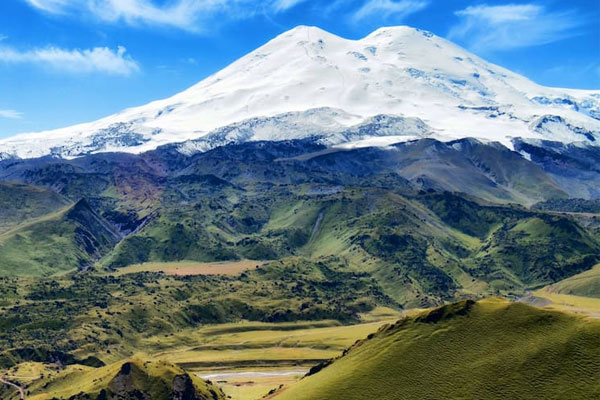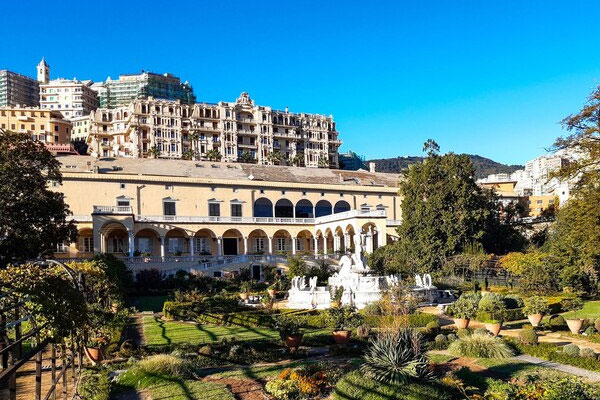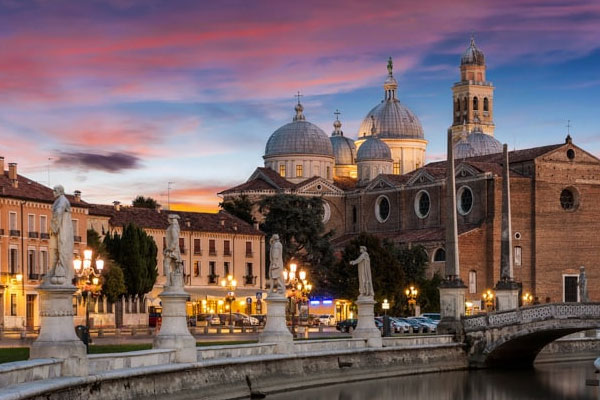Travel
Highest Mountains in Russia | List of Mountains of Russia

Highest Mountains in Russia
Exploring Highest Mountains in Russia: Russia boasts over two thousand majestic mountain peaks, each with its unique charm and allure. Among these peaks, some stand out for their towering heights, offering breathtaking views and challenging climbs.
In this comprehensive guide, we will delve into the top ten highest mountains in Russia, all located along the Main Caucasus Range, easily accessible from the Nalchik airport in Kabardino-Balkaria.
Elbrus (5,642 m):
The crown jewel of Russia’s mountains, Elbrus, takes the top spot as the highest peak not only in the country but also in Europe. This stratovolcano resembles a layer cake, with its Eastern peak standing at 5,621m and the Western peak towering at 5,642m. Elbrus, part of the Elbrus National Park since 1986, boasts 23 glaciers flowing into the valley.
The climb to Elbrus began in 1829, with the Eastern peak conquered by General George Emanuel and a group of Russian scientists. The Western peak saw its conquest 45 years later by an English expedition with Russian guide A. Sottaev. Notably, the first winter ascent occurred in 1934 by Russian climbers Gusev and Korzun.
Tourists can reach Elbrus by driving along the A 158 road, leading to hotels and tourist centers at the southern and eastern foot of the mountain. Popular bases include the “Shelter of the Eleven,” Azu Star hotel, Cheget hotels, and the highest mountain hotel in Europe, LeapRus.
Activities around Elbrus include speed climbing championships, skiing, summer climbs, excursions, and the exploration of legends and traditions.
Dykhtau (5,205 m):
Situated on the border between Kabardino-Balkaria and Georgia, Dykhtau is the second-highest mountain in Russia. Known as the “Jagged Mountain,” Dykhtau poses challenges for mountaineers due to frequent avalanches and rockfalls from almost vertical cliffs. The peak was first conquered in 1888 by Zarflu and Albert Mummery.
Dykhtau offers ten routes of varying difficulty (from 4A), making it a favorite among experienced climbers. Despite its difficulty, the mountain attracts extreme tourism enthusiasts, but it is not recommended for beginners.
Koshtantau (5,152 m):
Although visually deceptive with soft outlines resembling a hut, Koshtantau is a dangerous mountain. Its marble glaciers and icefalls are best admired from a safe distance. The first attempt to conquer Koshtantau in 1888 resulted in the loss of two English climbers’ lives.
Modern climbers can choose routes of varying difficulty (from 4B to 6A) with Bezengi alpine camp serving as a base. Climbers ascend through the Krumkol “overnight camps” to the “3,900” parking lot, with routes taking 8-10 hours.
Pushkin Peak (5,100 m):
A highlight of the Dykhtau mountain range, Pushkin Peak, nicknamed “Gendarme,” remained unclimbed until 1937. Climbers have developed two routes: 4B along the South Wall and 5B along the North Face. The Gendarme is part of the “Route Not Taken” program, focusing on unexplored and challenging mountaineering routes.
While providing a magnificent panorama of the Tuzuak glacier, Pushkin Peak has claimed the lives of experienced climbers, emphasizing the mountain’s risks.
Dzhangitau (5,085 m):
Situated in the central part of the thirteen-kilometer Bezengi wall, Dzhangitau is part of the New Mountain. Climbers can access the peaks starting from the Bezengi camp, with routes ranging from 4A to 5B in difficulty. The most challenging routes, including the winter and summer traverse of the Bezengi Wall, lead through the top of Dzhangi.
All Russian routes are temporarily closed due to difficult climbing conditions and political instability in the region.
Shkhara (5,193 m):
Ranking as the sixth-highest mountain in Russia, Shkhara’s Western peak faces Kabardino-Balkaria and rises to 5,068.8 meters. Shkhara, also known as the Striped Mountain, captivates with its crystalline shale formations and granite.
Routes of varying difficulty (from 3A to 6A) have been developed for tourists, while professional climbers favor the temporarily closed 5A difficulty level route on the Russian side. The village of Ushguli, located on the southern slope, enjoys UNESCO protection.
Kazbek (5,033.8 m):
This extinct stratovolcano, also known as Ice Peak, Melting Mountain, or White Mountain, is located on the border of Russia and Georgia. Kazbek is surrounded by legends and stories, with one title being “The Peak Where the Dragon Lied.” Six massive glaciers flow down from the summit.
While suitable for inexperienced climbers on the Russian side, the category 2B route is technically complex and lengthy, requiring specialized training, a professional instructor, and thoughtful equipment due to abrupt weather changes.
Travelers can enjoy a hot (+45) natural “bath” in the Karmadon Gorge’s geothermal springs after conquering Kazbek.
Mizhirgi (5,025 m):
Named after the Balkarian shepherd Mazhir Attaev, Mizhirgi-Tau is the eighth “five-thousand” peak in Russia. Climbing Mizhirgi-Tau requires experience, professionalism, fearlessness, and attentiveness, as the mountain’s capricious nature is evident in deep cracks and frequent glacier collapses.
All routes on Mizhirgi-Tau belong to the categories of especially difficult climbs (4B – 6A).
Katyn-Tau (4,970 m):
Known as the “Woman Mountain,” Katyn-Tau is just shy of 5,000 meters and holds the ninth spot among Russia’s highest mountains. Legend has it that the rebellious daughter Tetnulda sought solace in the mountains when her parents disapproved of her marriage. Another name for the peak is Adish.
Part of the Kabardino-Balkaria nature reserve, Katyn-Tau’s picturesque slopes in the upper reaches of the Cherek are accessible only to experienced climbers due to sudden weather changes and potential avalanches.
Peak Shota Rustavelli (4,860 m):
Located in the center of the Main Caucasus Range, Peak Shota Rustavelli ranks tenth in height but poses a challenge due to its “complexity of character.” Threatening the neighboring valley with glacier descents, the peak is accessible for mountaineering during the summer months or early autumn.
The first ascent of Peak Shota Rustavelli occurred in 1937, and climbers must organize full-scale expeditions with serious preliminary preparation to conquer its 4A difficulty route.
Conclusion:
While it may be impossible to declare the most beautiful mountain in Russia, ranking them by height allows enthusiasts to explore and appreciate the diverse landscapes and challenges these peaks offer. From the iconic Elbrus to the lesser-known gems like Mizhirgi and Katyn-Tau, Russia’s mountainous terrain invites adventurers to witness the grandeur of the “Mountain Country” from both the summit and the foot of these majestic peaks.
Travel
What to do in Genoa – Travel To Genoa

What to do in Genoa – Travel To Genoa
What to do in Genoa :
Genoa, often overshadowed by its more popular Italian counterparts, holds a wealth of treasures waiting to be discovered. While it may not immediately come to mind when planning an Italian adventure, this maritime city boasts a rich history as the former capital of a powerful republic and the birthplace of renowned figures like Christopher Columbus and Niccolo Paganini.
Despite its lesser-known status, it offers a unique charm and a plethora of attractions that appeal to curious travelers. So, what makes this city special, and what should you do when you visit?
Getting to Genoa
Reaching Genoa is easier than you might think. During the summer months, S7 Airlines offers direct flights, while various European carriers operate year-round flights. Alternatively, you can fly to Milan and take a short train ride to Genoa, which is only about an hour and a half away. Train travel is also an option, with direct routes available from cities like Moscow. Whether you choose to fly or take the train, Genoa is well-connected and easily accessible.
Where to Stay in Genoa
Choosing accommodation in Genoa requires some consideration, especially due to the city’s intricate layout. The historical center may seem compact, but its labyrinthine streets can be confusing to navigate, particularly with luggage. Opting for hotels near major transportation hubs like Principe and Bignoli train stations or metro stations is advisable.
For first-time visitors staying briefly, accommodations near Genova Piazza Principe offer convenience and easy access to transportation links, including the airport bus stop and cruise terminal. From luxurious hotels like the Grand Hotel Savoia to budget-friendly options such as Hotel Chopin, there’s something to suit every preference and budget.
Getting Around Genoa
Exploring Italy on foot is the best way to immerse yourself in its unique atmosphere. While the city’s narrow medieval streets may pose navigational challenges, they offer an authentic glimpse into its history and character. However, public transportation is essential for covering longer distances or navigating the city’s verticality.
Genoa boasts a metro system, buses, funiculars, and elevators integrated into the transportation network. Consider purchasing a 24-hour Genova Pass for unlimited access to public transport, excluding airport shuttles.
What to See in Genoa
Contrary to popular belief, Genoa is brimming with attractions awaiting discovery. From opulent palaces and picturesque gardens to ancient churches and world-class museums, the city offers something for every traveler. Key highlights include Ferrari Square, a grandiose civic space; the Cathedral of St. Lawrence, guarded by stone lions; and the Palazzi dei Rolli, a collection of historic palaces showcasing Genoa’s architectural splendor.
Additionally, numerous churches, including the Church of St. Peter’s and the Church of St. John, offer cultural and architectural delights. Don’t miss iconic landmarks like Villa del Principe, Lanterna lighthouse, and the medieval gate of Porta Soprano, each adding to Genoa’s allure.
Day Trips from Genoa
While Genoa itself warrants exploration, it also serves as an ideal base for day trips to nearby destinations. Along the Ligurian coast, picturesque towns like the Cinque Terre National Park, Portofino, Rapallo, and Camogli beckon with their scenic beauty and charm. Venture westward to discover hidden gems such as Noli, Finale Ligure, and Albenga, each offering its own unique allure.
Beyond the coast, explore the caves of Toirano or visit the historic town of Campo Ligure, known for its medieval castle. With so much to see and do in the surrounding area, Genoa provides an excellent starting point for exploring Liguria’s diverse attractions.
Conclusion
Genoa may not be as widely recognized as other Italian cities, but its cultural heritage, architectural marvels, and coastal beauty make it a destination worth exploring. Whether you’re strolling through its labyrinthine streets, admiring historic palaces, or embarking on day trips along the Ligurian coast, Genoa captivates visitors with its rich history and vibrant atmosphere. So, why not uncover the hidden treasures of this underrated gem on your next Italian adventure?
Travel
Things to do in Rimini Italy

Things to do in Rimini Italy
Do you know the most important Things to do in Rimini Italy? Let’s take a look
Rimini is renowned as a beach resort destination, drawing visitors from Italy and beyond with its long history of seaside hospitality. However, beyond its sandy shores lies a city steeped in ancient heritage and cultural charm, offering a wealth of attractions for travelers to discover. In this comprehensive guide, we’ll delve into everything you need to know to plan an unforgettable trip to Rimini.
Getting to Rimini
Rimini is accessible by air, land, and sea, making it convenient to reach from various parts of Italy and Europe. The city has its own international airport, Federico Fellini Airport, serving both domestic and international flights. Additionally, Rimini is well-connected by train, with direct rail links to major cities like Bologna and Ancona. For those arriving by car, highways provide easy access to Rimini from neighboring regions.
Where to Stay in Rimini
With its status as a popular resort destination, Rimini offers a wide range of accommodation options to suit every traveler’s needs and preferences. The Marina Centro area, situated in the heart of the resort district, is ideal for beachgoers seeking convenience and proximity to amenities.
Here, hotels like Erbavoglio and De Londres offer comfortable accommodations within walking distance of the beach. Alternatively, for those looking to explore the city’s historic center, hotels in the Old Town area provide easy access to landmarks like the Tempio Malatestiano and Ponte di Tiberio.
Getting Around Rimini
Navigating Rimini is relatively straightforward, with most attractions located within easy reach of the city center. Visitors staying in Marina Centro can explore the resort area on foot, while those venturing further afield can make use of public transportation options like buses and trains. Rimini’s efficient public transit system provides convenient access to key sites, including the Old Town and surrounding areas.
What to See in Rimini
Rimini boasts a rich cultural heritage, with a variety of historical and architectural landmarks waiting to be explored. In the city’s historic center, visitors can admire the impressive Tempio Malatestiano, a medieval temple converted into a cathedral, and stroll across the ancient Ponte di Tiberio, a Roman bridge dating back to the 1st century AD. For a glimpse into Italy’s cinematic history, Parco Federico Fellini offers a tribute to the renowned filmmaker with statues and exhibits celebrating his life and work.
In addition to its historical attractions, Rimini is home to modern marvels like Italia in Miniatura, a theme park featuring miniature replicas of famous Italian landmarks. Perfect for families and visitors of all ages, this unique attraction offers a fun and educational experience that showcases the country’s cultural heritage on a smaller scale.
Day Trips from Rimini
While Rimini itself offers plenty to see and do, its strategic location makes it an ideal base for exploring the surrounding region. Nearby destinations like San Marino, Santarcangelo di Romagna, and Gradara are easily accessible by car or public transportation, offering charming villages, historic sites, and picturesque landscapes to discover.
For those seeking a taste of urban culture, cities like Bologna, Ravenna, and Ancona are just a short train ride away, providing opportunities to explore their rich history, vibrant arts scene, and culinary delights.
Conclusion
From its sun-drenched beaches to its ancient landmarks and modern attractions, Rimini offers a diverse array of experiences for travelers to enjoy. Whether you’re soaking up the sun along the Adriatic coast, exploring the city’s historic center, or embarking on day trips to nearby destinations, Rimini promises a memorable and rewarding travel experience for visitors of all interests and ages.
Travel
Where to Stay in Trento Italy

Where to Stay in Trento Italy
Where to Stay in Trento, Italy :
Trento, nestled in a valley at the base of the Alps, is a city worth exploring! With its picturesque surroundings and proximity to other charming towns and attractions, Trento offers something for every traveler. Whether you plan to wander through the city streets, venture into the nearby mountains, or use Trento as a launching pad for further adventures, there’s plenty to see and do here.
Which area of Trento is best for accommodation?
Trento is relatively straightforward to navigate, with the historical city center separated from the train and bus stations by a large square. Near the station, you’ll find a tourist information kiosk where you can pick up a map of the city, or visit a nearby travel agency for assistance.
Trento offers city-wide wireless internet access, although you may need to register in advance for login credentials. It’s worth noting that temperatures can vary significantly between the city and the mountains, so be sure to pack appropriate clothing and footwear for your adventures.
The area around the train station is relatively clean and quiet, making it a convenient option for those planning to explore the region using public transportation. Hotels near the station, such as the Grand Hotel Trento and Hotel America, offer comfortable accommodations at slightly lower prices compared to those in the city center. These hotels provide easy access to both the station and the historical center of Trento, which is just a short walk away.
Speaking of the city center, Trento’s historical district is relatively compact, making it easy to explore on foot. When choosing a hotel in this area, focus on factors such as cost and traveler reviews rather than proximity to specific attractions, as most hotels are within walking distance of the main sights.
Keep in mind that older buildings in the city center may lack amenities like elevators and spacious bathrooms, but they often offer charm and character in abundance.
Hotels such as Hotel Venezia and Hotel Aquila D’Oro offer comfortable accommodations in the heart of Trento’s city center. While some rooms may offer views of the city or nearby landmarks, be prepared for the possibility of street noise, especially in the mornings. Alternatively, Albergo Accademia provides spacious designer rooms with amenities like jacuzzis, although guests may prefer rooms facing the quieter courtyard.
For those seeking a more independent accommodation option, apartments can be a great choice. Borgo Rossi Apartments, located near Piazza Venezia, offer kitchenettes and dining areas, allowing guests to prepare their meals and experience local cuisine firsthand. Be sure to communicate with the apartment owners or managers ahead of time to clarify details like heating and air conditioning availability, parking options, and key pickup procedures.
Conclusion
In conclusion, Trento offers a range of accommodation options to suit every traveler’s needs and preferences. Whether you choose to stay near the train station for convenience or in the heart of the city center for easy access to attractions, you’re sure to enjoy your time exploring this charming Italian city.
-

 Travel9 months ago
Travel9 months agoBest Spinning Rod for Bass 2024
-

 Technology9 months ago
Technology9 months agoBest Lure for Trout 2024
-

 Travel9 months ago
Travel9 months agoBest Hunting and Fishing Clothing 2024
-

 Travel9 months ago
Travel9 months agoBest Robot Vacuum Cleaners 2024
-

 Technology9 months ago
Technology9 months agoBest Floats for Night Fishing
-

 News6 months ago
News6 months agoValentine’s Deals
-

 Technology9 months ago
Technology9 months agoBest Twisters for Fishing 2024
-

 Travel9 months ago
Travel9 months agoBest Spinning Fishing Reels for Bass 2024



















